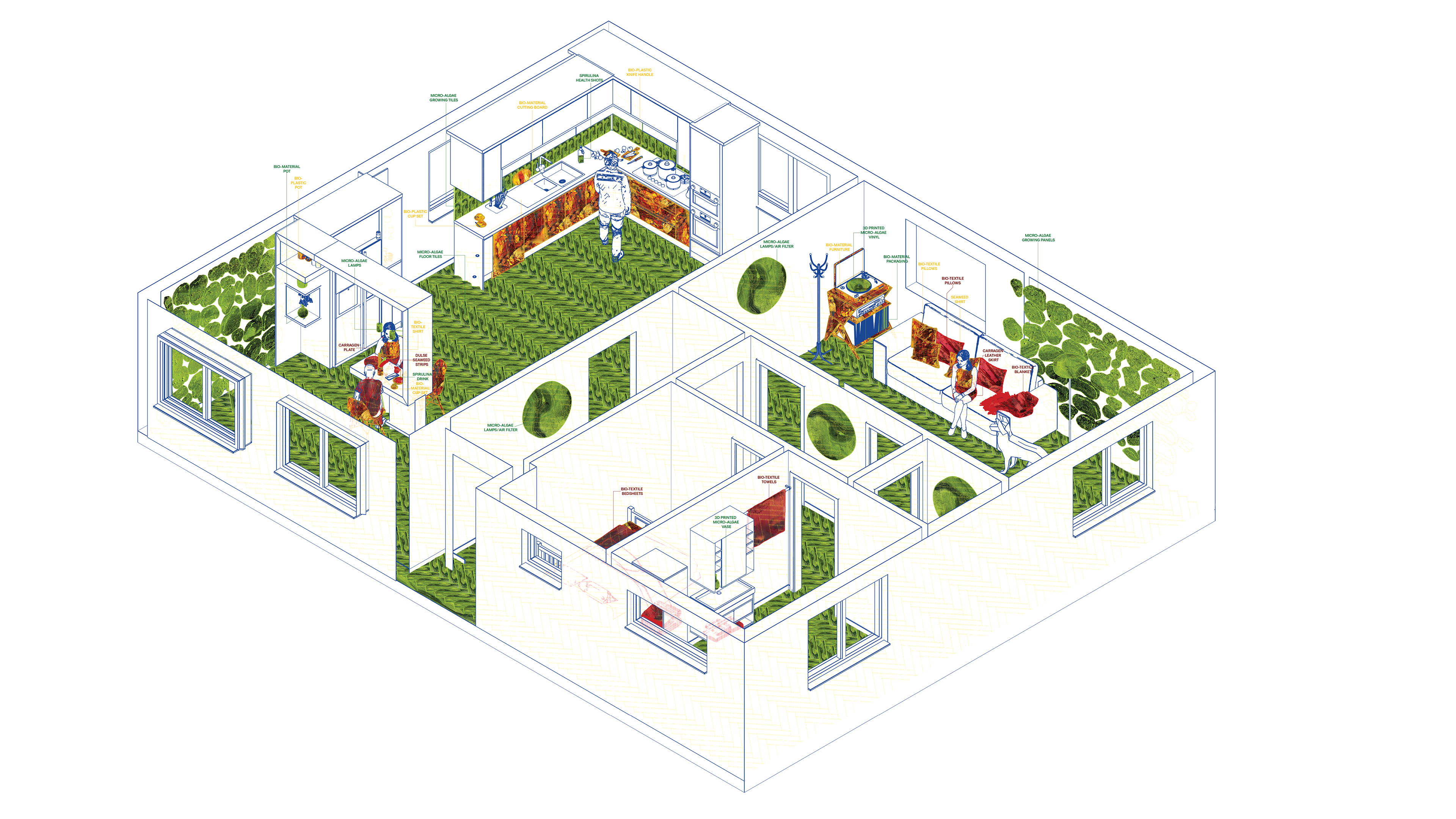Project exhibited at the 2021 Dutch Design Week, in Eindhoven, The Netherlands. See More
Project featured in Dezeen. See article
Finalist in the Ibero-American Design Biennale 2021/2022 & Exhibited at Central de Diseño in Matadero, Madrid. See More
Finalist at EFood Conference 2022 in Portugal by The Fork Organization. See More
Honorable Mention at Cumulus Green 2022: Nurturing Our Planet (Design for Zero Hunger). See More
Soon to be Exhibited at TAB 2022 'Edible; Or, The Architecture of Metabolism' in Tallinn, Estonia. Learn More
RESEARCH & CONTEXT
What sparked the idea for this project was that for the past few years I had been seeing headlines in Galicia around the fact that fish are disappearing from the ocean, that fishermen are suffering as a result, and that the fishing industry was contributing to the release of thousands of tonnes of CO2 per year. This, was an industry in crisis.
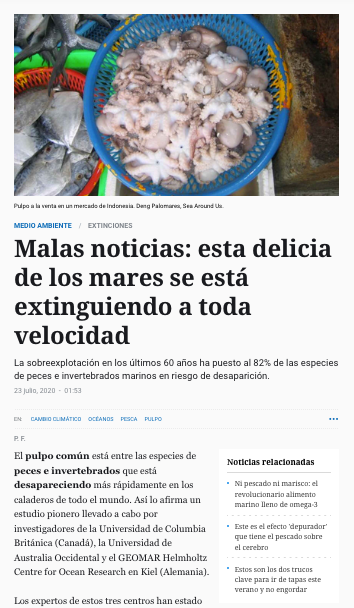
"Bad News: This treasure of the sea is disappearing at record speed".

"Massive drop in population of sea bass, seabream and octopus, with an 80% less".
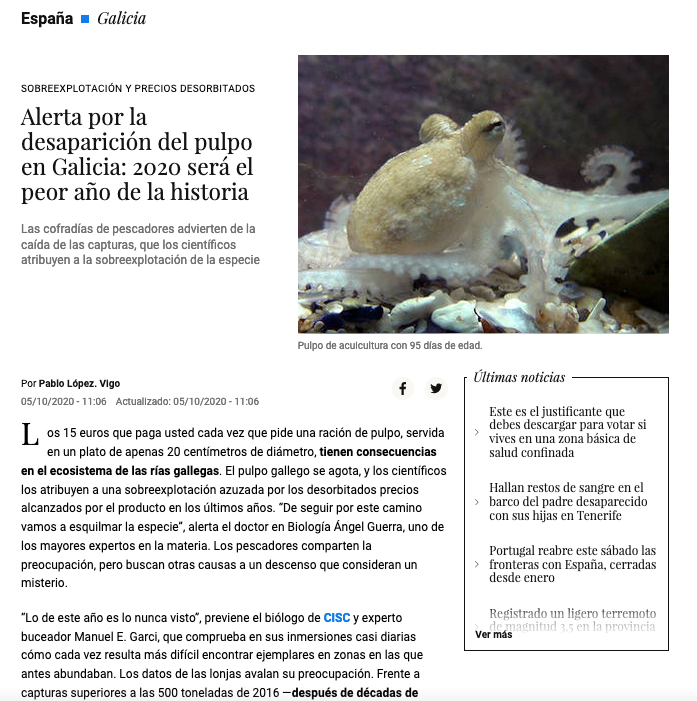
"Alert about the disappearance of octopus in Galicia: 2020 would be the worst year in history".
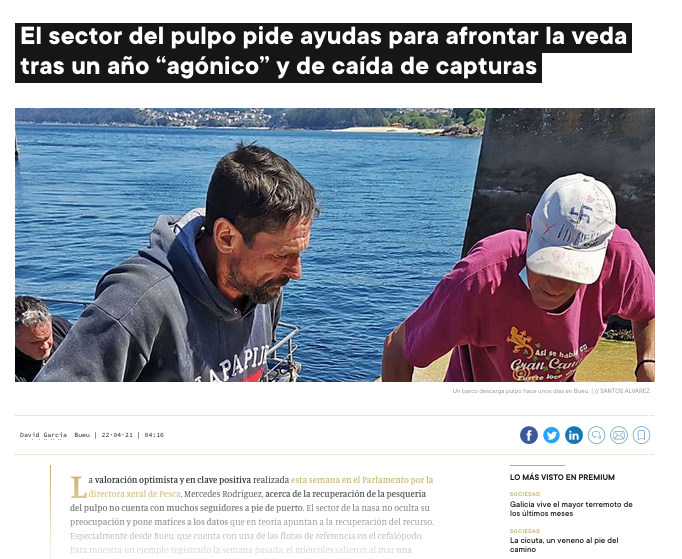
"Fishing sector asks for subsidies to help with the agonic decline in captures".
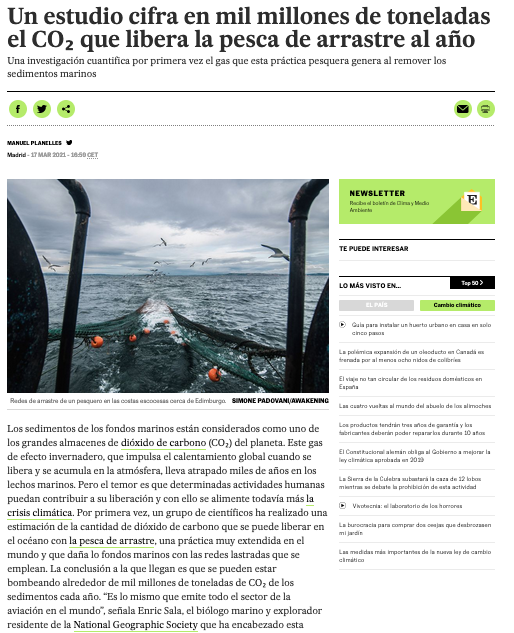
"A study sets the impact of large scale fishing at a thousand million tonnes of CO2 per year".
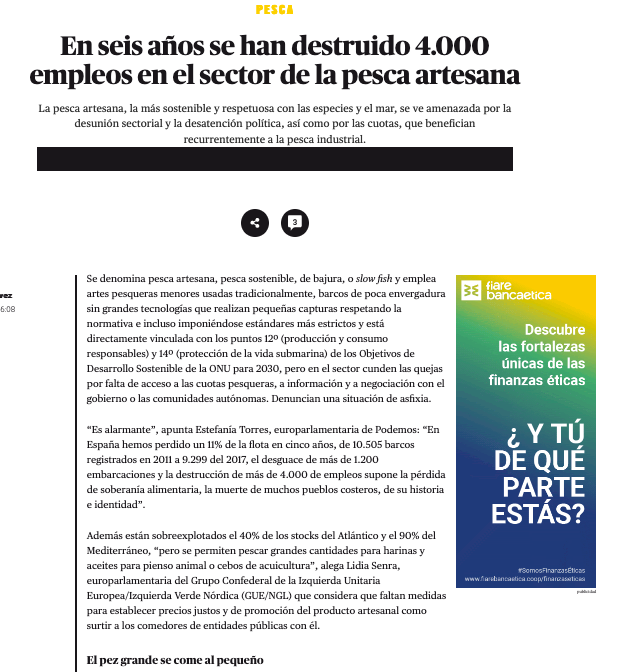
"In six years 4.000 jobs in small scale and artisanal fishing have been destroyed".
This trend of disappearing fish is not only happening in Galicia, but around the world. The main challenge in the fishing industry today is called over-fishing, which happens when too many fish are taken from an ecosystem, leaving it unable to replenish. It is estimated that over-fishing costs the EU 3.2 Billion euros each year. Industrial fisheries are the major contributors to the issue, since they often engage in over-fishing in such large amounts that our oceans cannot realistically support them. A problem that goes hand in hand with over-fishing is that of "by catch" , which means catching other sea animals or endangered species in fishing nets by mistake. It is estimated that 8 to 25% of the total catch is by catch
This amounts to around 27 million tons of by catch per year. Even though we have always relied on the ocean for survival, in the past century we have exploited this resource almost to the maximum. Fish production today is so huge that we count it in tons, as it is impossible to count how many individual fish are taken. if we continue like this it is estimated that we will have a FISHLESS OCEANS BY 2048. Around 15 million people rely on the ocean for survival, and most of those people are concentrated in rural areas, just like the areas in Galicia that are seeing their fish disappear from the ocean.
This amounts to around 27 million tons of by catch per year. Even though we have always relied on the ocean for survival, in the past century we have exploited this resource almost to the maximum. Fish production today is so huge that we count it in tons, as it is impossible to count how many individual fish are taken. if we continue like this it is estimated that we will have a FISHLESS OCEANS BY 2048. Around 15 million people rely on the ocean for survival, and most of those people are concentrated in rural areas, just like the areas in Galicia that are seeing their fish disappear from the ocean.
I wanted to look for an alternative for these small coastal communities, an alternative that took fish out of the sea culture all together.

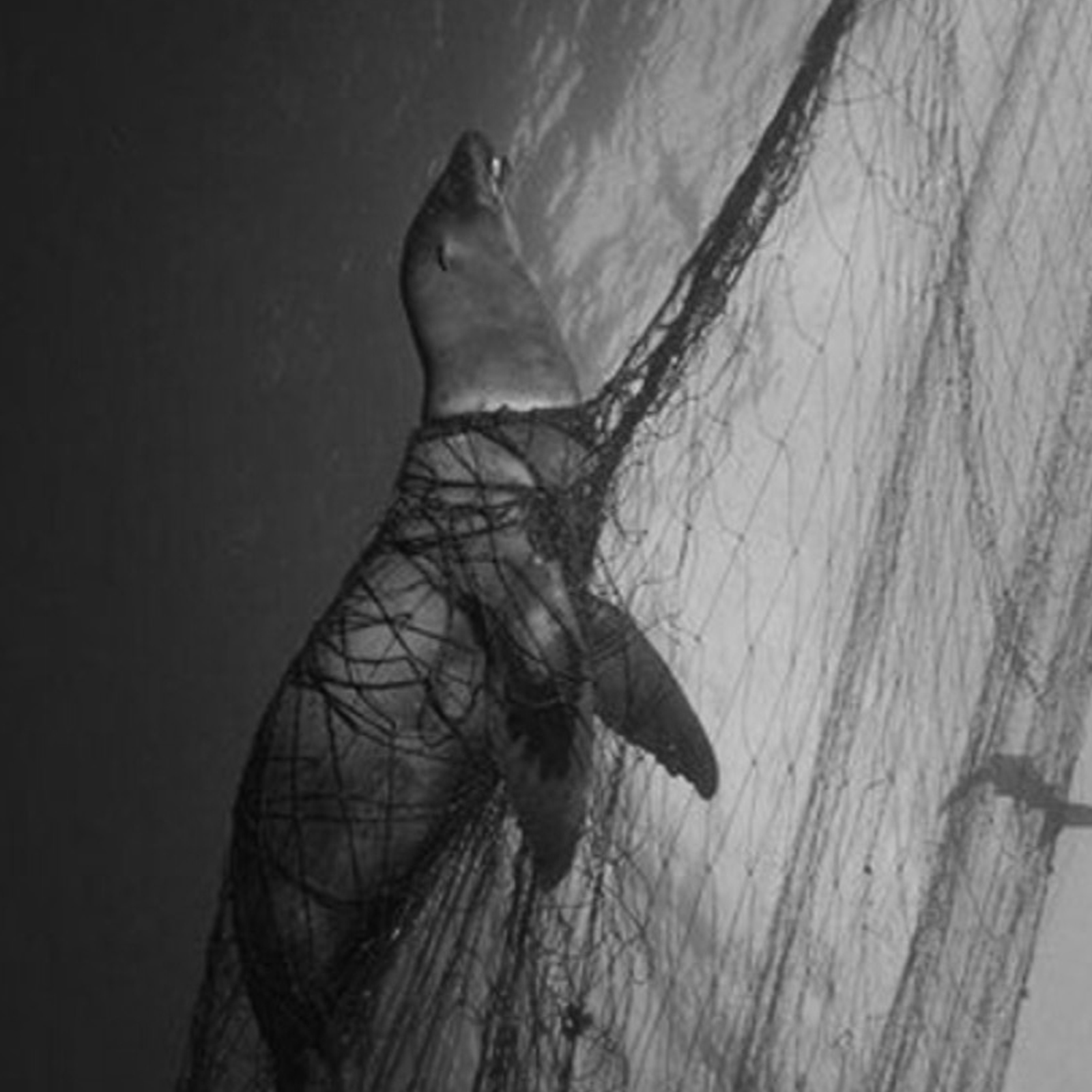
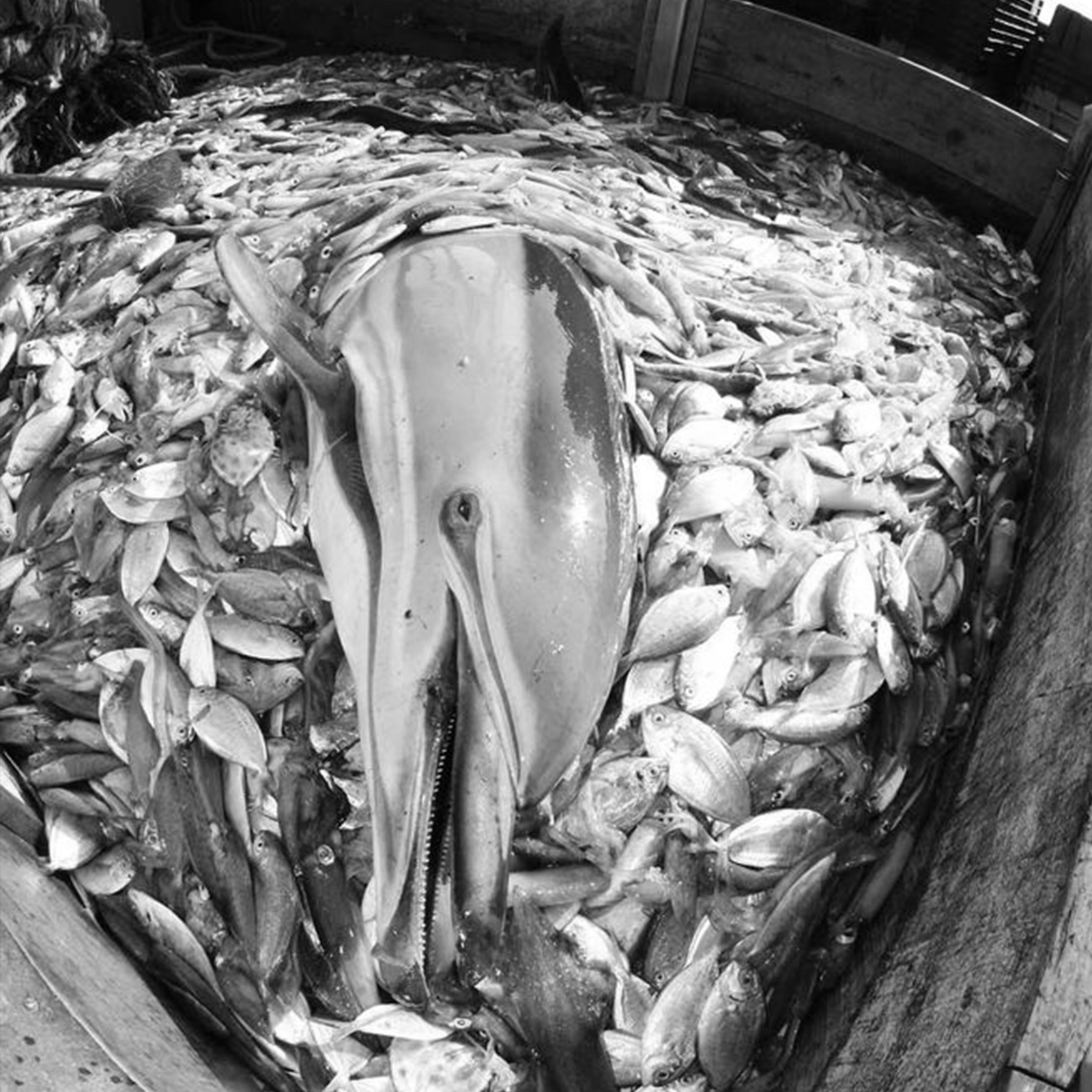


That alternative is seaweed. Seaweed was used in the North of Europe and Galicia throughout history, specially in times of war, conflict, hunger or natural disaster; seaweed helped coastal communities survive.
During the mid XX century extraction of seaweed became essential for many industries, and war forced Europe to develop their own seaweed industry from local species. In the 70's Galicians harvested around 10,000 tons of red seaweed per year. But, from the 80's, a lack of technological advancements and real regulations led to an inability to compete with foreign companies. Today in Galicia, most seaweed is not farmed, but rather collected from natural ecosystems. Seaweed harvesters or "argaceiros" usually go to the shores in groups and collect the seaweed. Argaceiros are usually young people who are having trouble finding stable jobs in these coastal economies. After the seaweed is collected it is taken to processing to make Agar Agar.



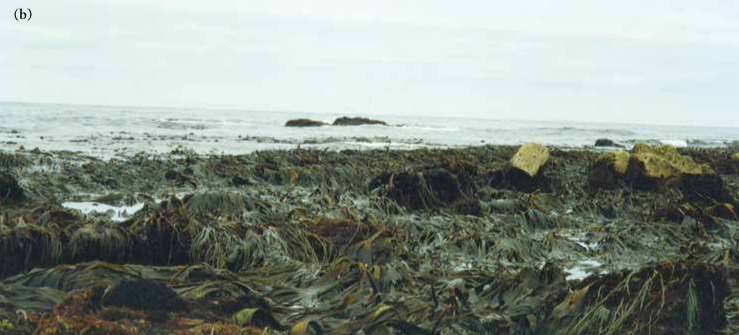
Seaweed, due to its versatility of uses and farming methods, offers the best opportunity for humans to rethink our relationship with the ocean. Seaweed has many properties that make it into a much more efficient food source. Farming it also has positive environmental effects in the areas it is farmed at. There are many case studies around the world showcasing how implementing seaweed farming can help coastal communities develop more sustainable economies.
Some industries that are seeing the potential of seaweed for innovation are the food industry, the health industry, new bio-materials and bio-plastics, textiles, beauty, architecture, and energy.
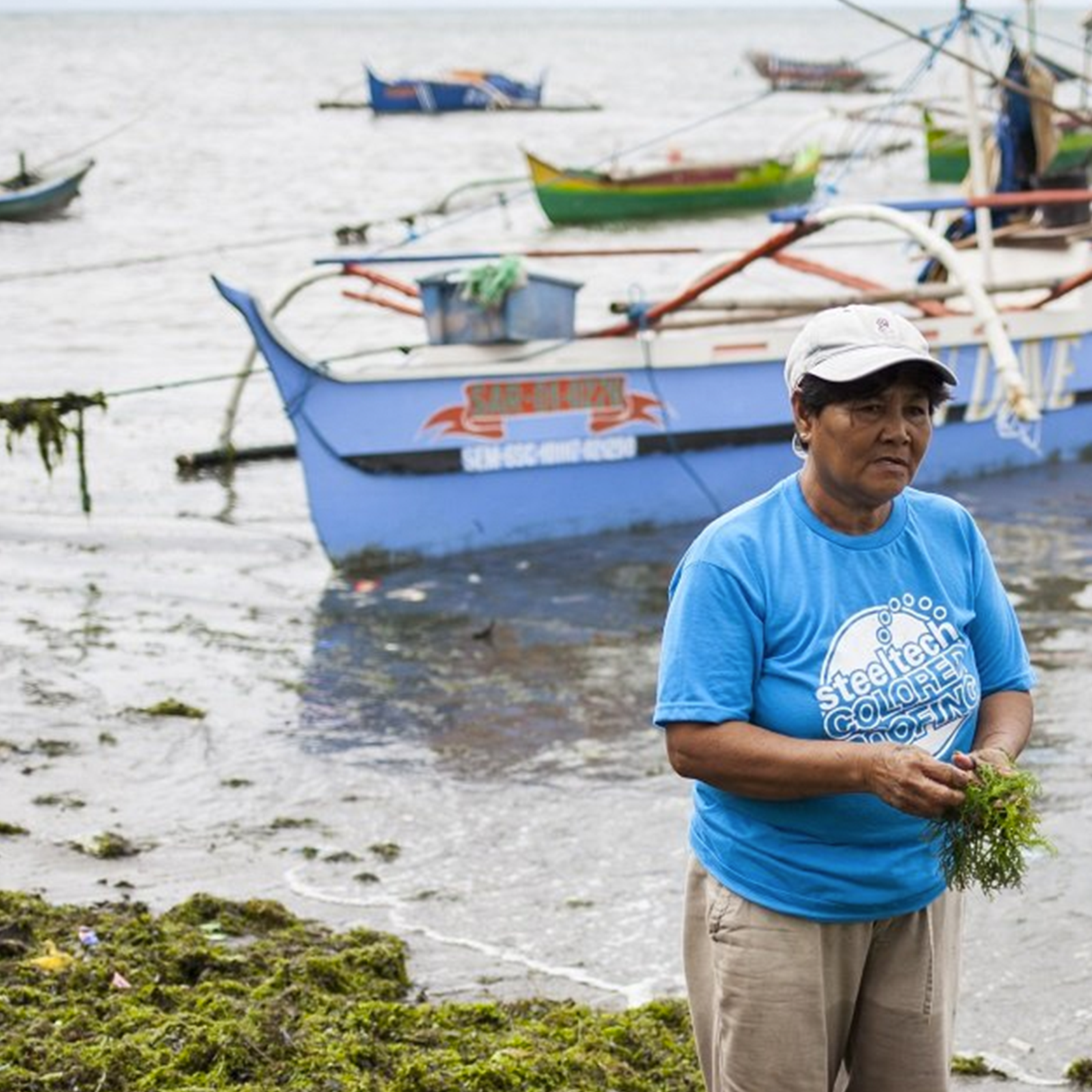


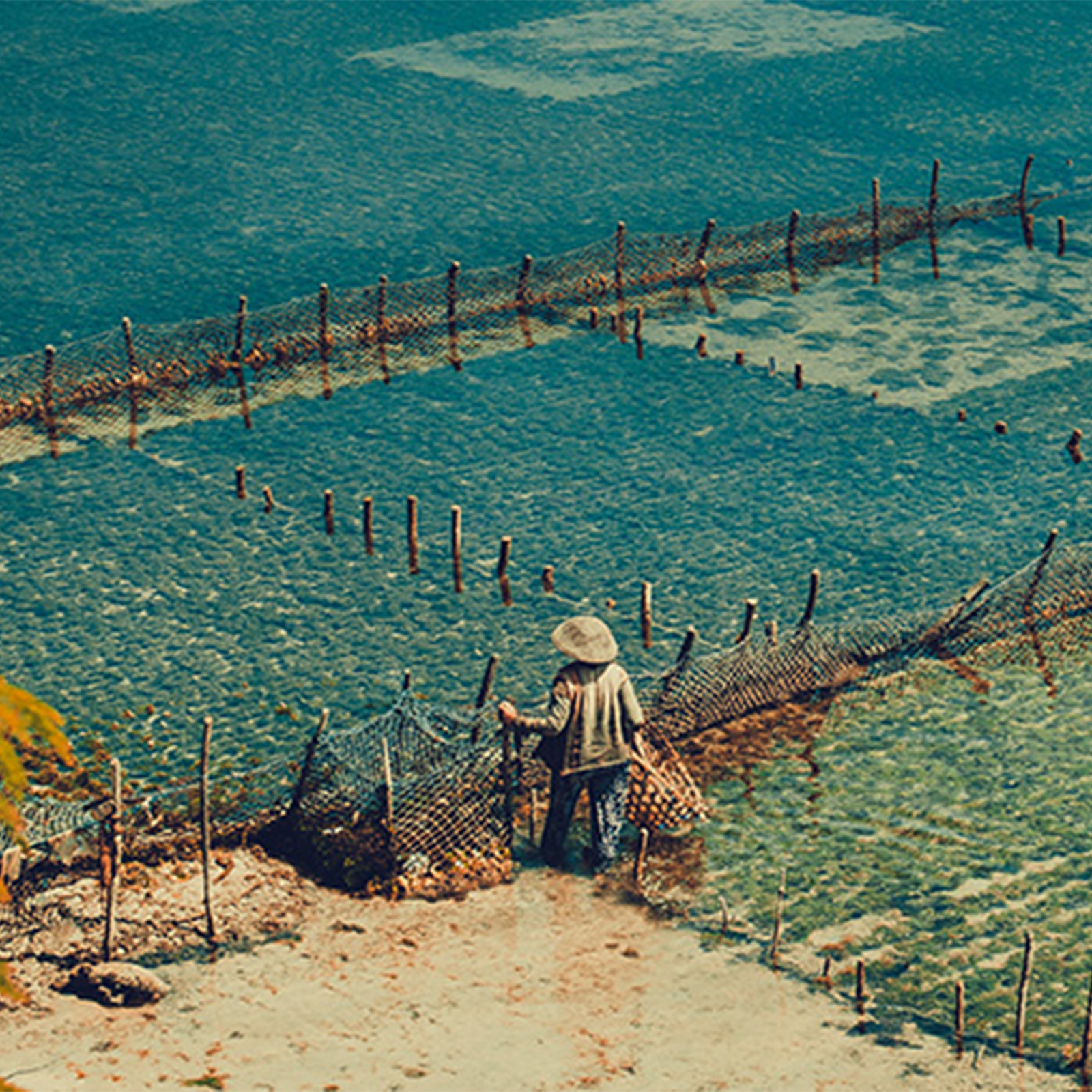
The location I chose was a town named A Guarda, in Vigo (Galicia), because this town has a long history of seaweed collecting as well as being one of the remaining towns that still collect seaweed.
The three types of seaweed implemented in the system will be Red and Brown seaweed, and Blue-Green micro-algae.

Red Seaweed

Blue-Green Micro Algae

Brown Seaweed
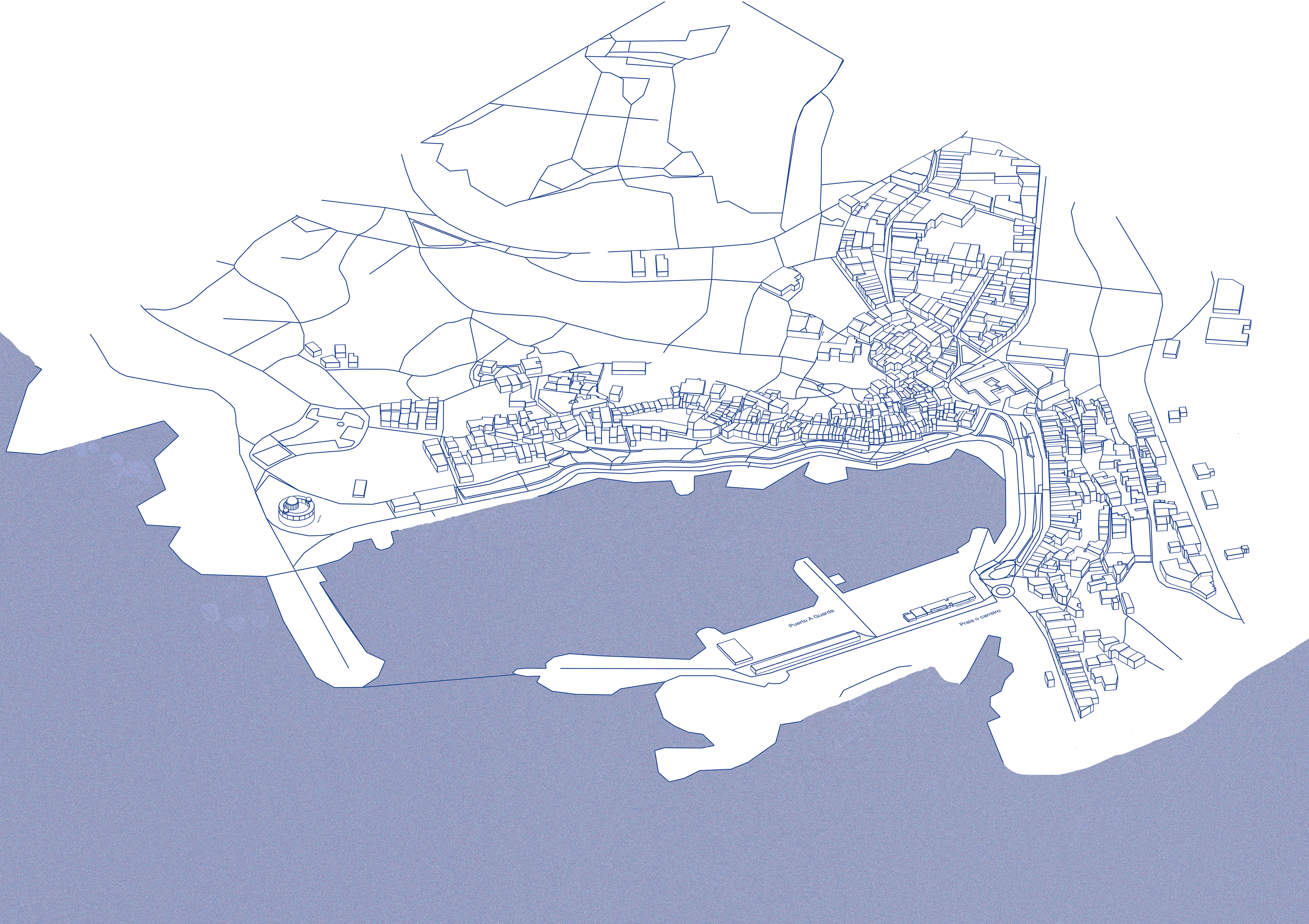
A Guarda, Galicia
SYSTEM IMPLEMENTATION
The system will be implemented in three phases over time. The first phase will be about a transition from fishing to seaweed farming, done through underwater farms and greenhouses to farm the seaweed. The second phase is about implementing seaweed back into the local culture, first through food and overtime through objects and the physical culture. The third phase will be about seaweed being implemented in all aspects of industry and personal life, and about fueling the system through seaweed energy.

PHASE I

Argaceiros collecting seaweed from underwater farm

Seaweed greenhouses to be placed around the shore
PHASE II
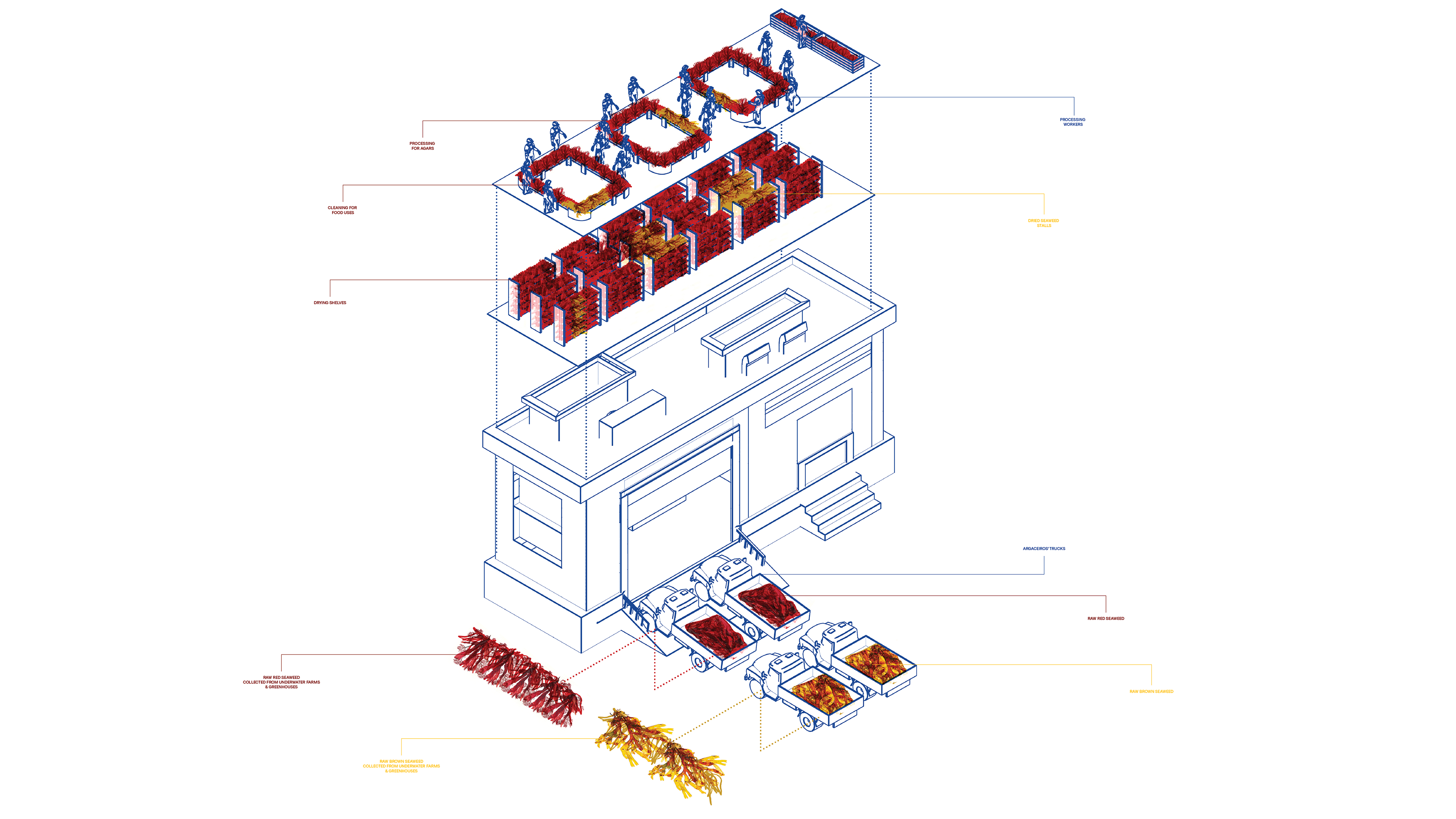
Seaweed Processing Plant

Local Lonxa

Seaweed implemented back into the local gastronomy (Restaurant)
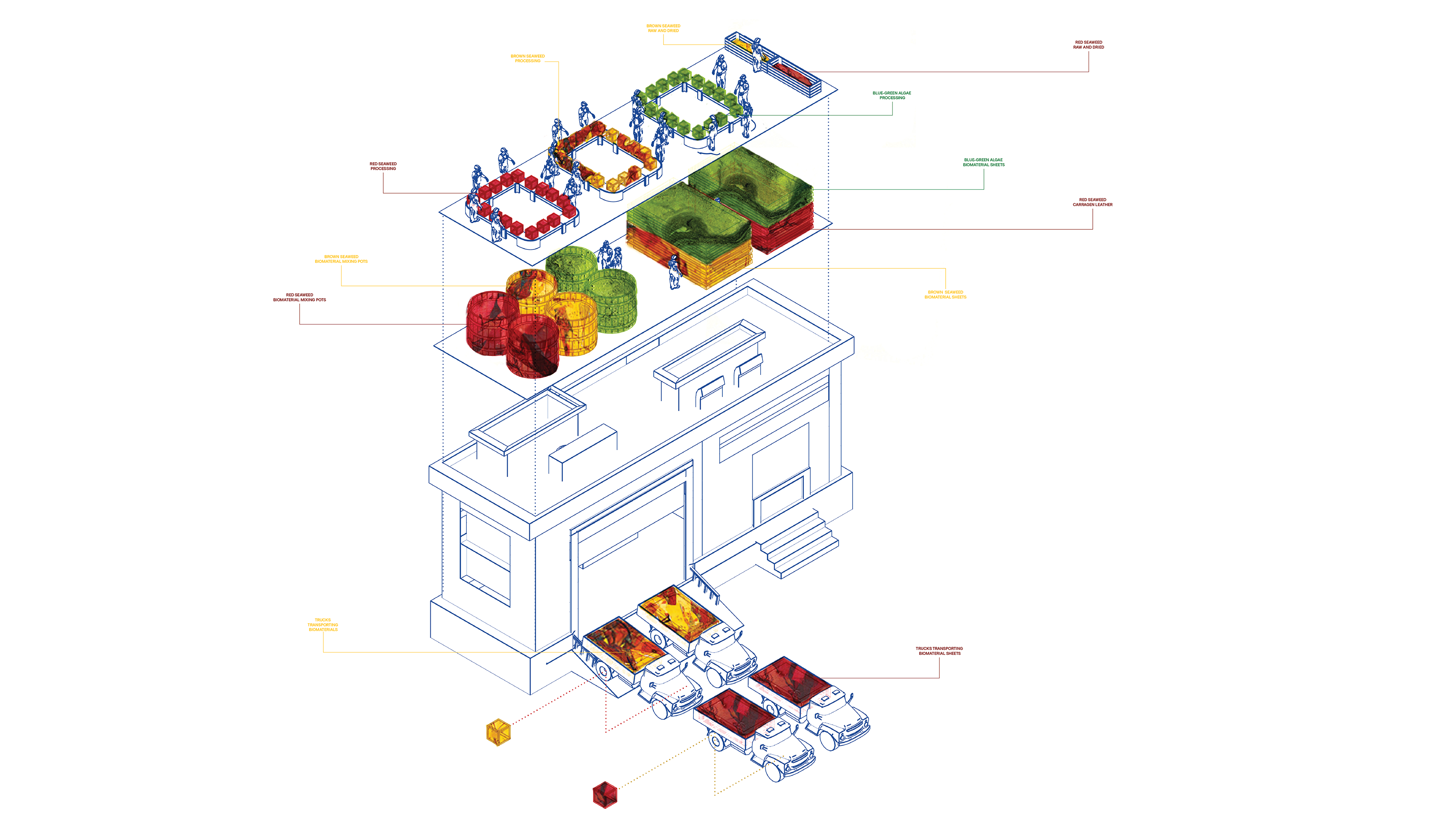
Biomaterial Factory - New Industries
PHASE III
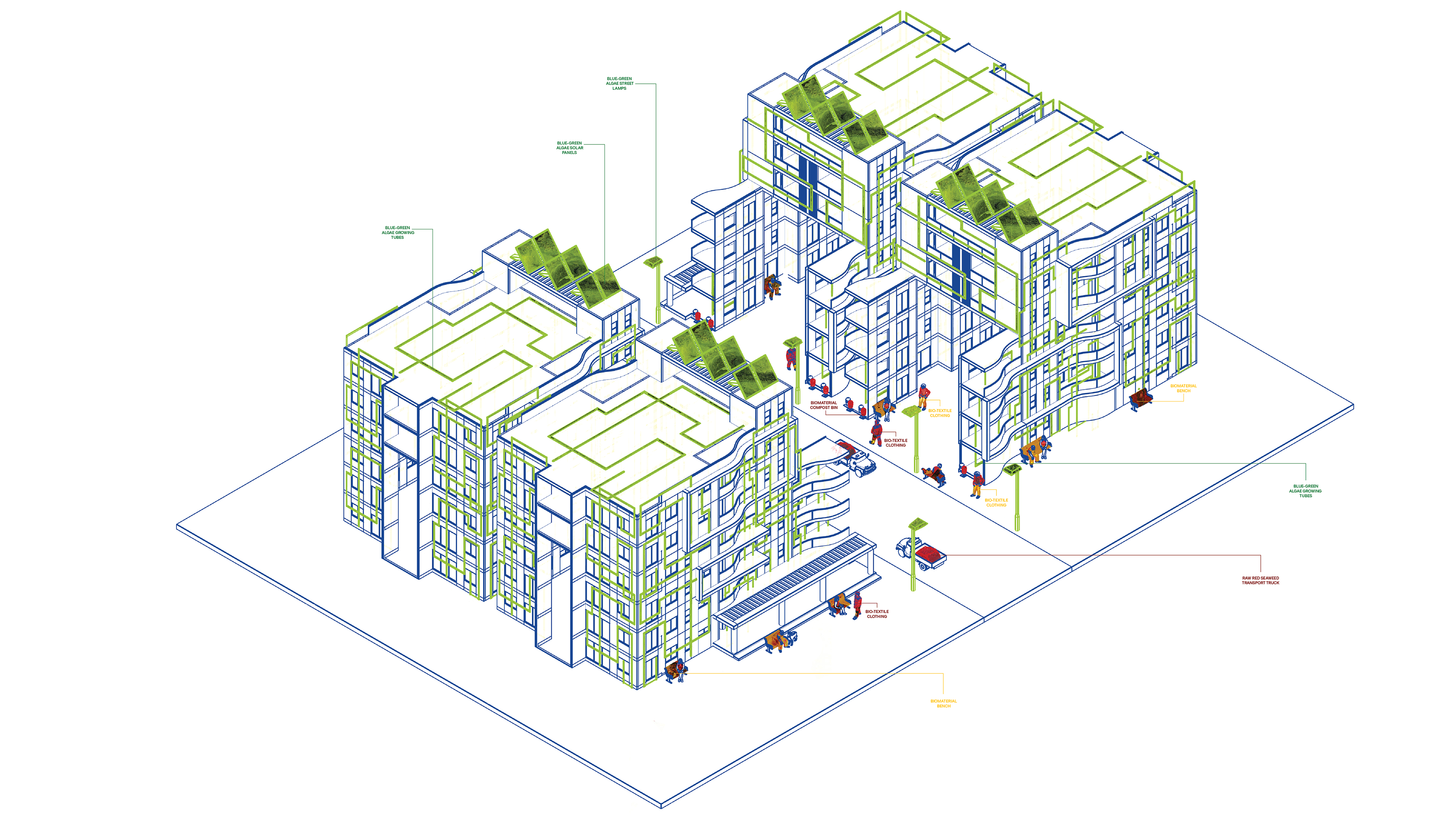
New A Guarda Streets
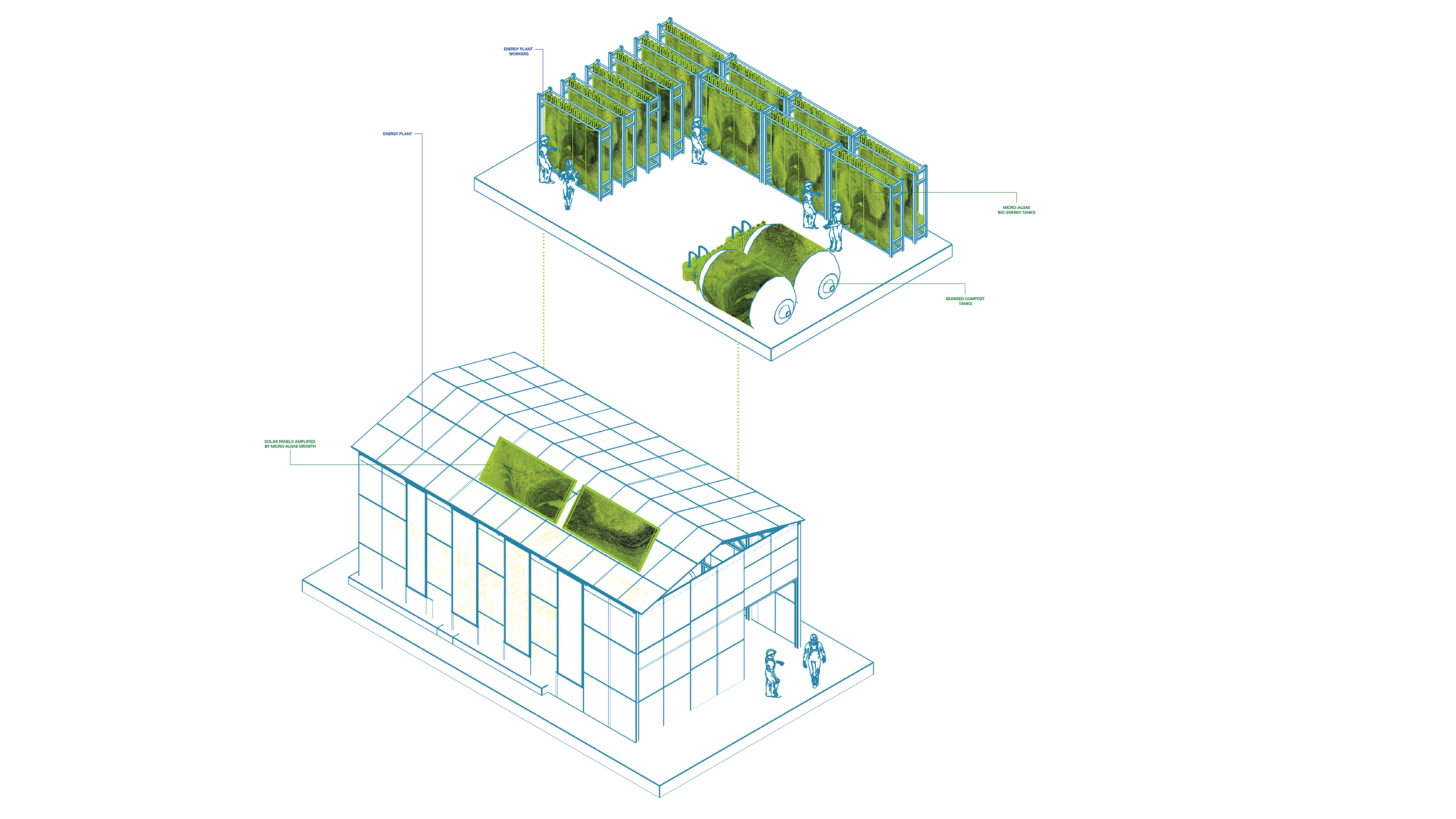
Seaweed Energy Plants
